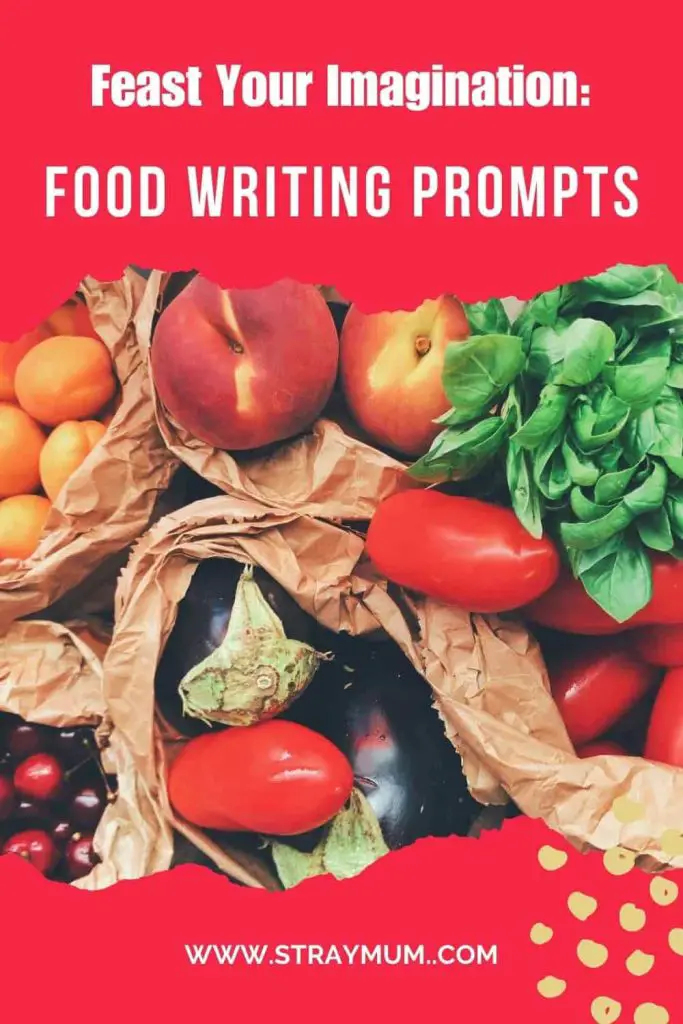Write Delicious Stories with Food Writing Prompts

Writing might be difficult to incorporate into your child’s education as a home educator. Using food as a writing prompt, on the other hand, can be a fun and interesting method to start your children writing. In this post, we’ll look at some culinary writing prompts that you may use to spark your child’s imagination.
Food Writing prompts for descriptive writing
Descriptive writing is an important skill that helps children to develop their vocabulary and sensory language. Here are some food writing prompts that you can use to encourage descriptive writing:
- Describe your favorite food in detail. Include information about its taste, texture, and smell. Write about how it makes you feel when you eat it.
- Write a sensory description of a food that you have never tried before. Use your imagination to create a vivid description. Would you like to try it?
- Describe a food that you absolutely dislike. Explain why you dislike it and use sensory language to describe its taste, texture, and smell. Have you ever tried to like it? Why or why not?
- Describe a food that you think is beautiful. Use sensory language to describe its colors, shapes, and textures. Why do you find it so pleasing?
- Describe a food that reminds you of a specific memory or experience. Use sensory language to describe the food and the memory or experience. Why does this food hold a special place in your memory?
- Describe a meal that represents your culture. Use sensory language to describe the flavors, textures, and smells of the food. Why is this meal important to your culture? How is it traditionally prepared or served?
- Describe a food that is popular in your local area. Use sensory language to describe its taste, texture, and smell, and explain why it is so popular. Have you ever tried to make this food yourself? What was your experience like?
- Describe a food that you have never tasted before but are curious about. Use sensory language to imagine what it might taste like, feel like, and smell like. Why are you interested in trying this food? What do you think it might pair well with?

Writing prompts for persuasive writing
Persuasive writing is an important skill that children need to learn to effectively communicate their ideas and opinions. Here are some food writing prompts that you can use to encourage persuasive writing:
- Write a persuasive essay arguing for your favorite food as the best in the world. Use strong arguments and evidence to support your opinion. Consider the nutrition value of the food.
- Write a letter to a food company, persuading them to change their packaging to be more eco-friendly. Use persuasive language and include facts and statistics to support your argument. What benefits would eco-friendly packaging have for the environment?
- Write a persuasive essay arguing for or against the use of genetically modified foods. Use strong arguments and evidence to support your position. What are the potential benefits and drawbacks of genetically modified foods?
- Write a letter to a restaurant owner, persuading them to offer more vegan or vegetarian options on their menu. Use persuasive language and include facts and statistics to support your argument. Why do you believe that it’s important for restaurants to offer more plant-based options?
- Write a persuasive essay arguing for or against the consumption of fast food. Use strong arguments and evidence to support your position. What are the potential health consequences of consuming fast food on a regular basis? Are there any benefits to eating fast food?
- Write a letter to your local government, persuading them to provide healthier food options in school cafeterias. Use persuasive language and include facts and statistics to support your argument. What are the benefits of providing healthier food options in school cafeterias? How might this impact students’ academic performance and overall health?
Writing prompts for narrative writing
Narrative writing is a great way for children to develop their storytelling skills. Here are some food writing prompts that you can use to encourage narrative writing:
- Write a story about a family meal. Include descriptions of the food, the setting, and the people. How did the food bring the family together?
- Write a story about a character who discovers a new food that changes their life. Include descriptions of the food and how it affects the character. How does the character react to the new food?
- Write a short story about a character who embarks on a culinary adventure in a foreign country. Use sensory language to describe the foods they encounter and the people they meet along the way. What challenges does the character face, and how do they overcome them? What lessons do they learn about food and culture?
- Write a personal narrative about a significant food-related memory from your childhood. Use sensory language to describe the food, the setting, and the emotions you felt at the time. Why is this memory significant to you? How has it influenced your relationship with food as you’ve grown older?
- Write a short story about a character who learns to cook a dish that has been passed down through their family for generations. Use sensory language to describe the cooking process and the significance of the dish to the character’s family. What does the dish represent to the character’s family? How does learning to cook the dish impact the character’s relationship with their family?
- Write a personal narrative about a time when you tried a new and unfamiliar food. Use sensory language to describe the food, your reactions to it, and how it made you feel. What motivated you to try the food, and what did you learn from the experience? Would you try the food again in the future?
- Write a short story about a character who travels around the world in search of the perfect meal. Use sensory language to describe the foods they encounter, the people they meet, and the challenges they face along the way. What motivates the character to embark on this culinary adventure? What do they learn about themselves and the world as they travel?
- Write a short story about a character who opens their own restaurant. Use sensory language to describe the atmosphere, the menu, and the interactions between the character and their customers. What challenges does the character face in running their own restaurant, and how do they overcome them? What do they learn about themselves and their customers along the way?
Conclusion
Using food as a writing prompt can be a fun and engaging way to encourage your child’s writing skills. These writing prompts are just a starting point, and you can use them as a springboard to create your own prompts that are tailored to your child’s interests and abilities. Encourage your child to have fun with their writing, and watch as their creativity and imagination flourish.
